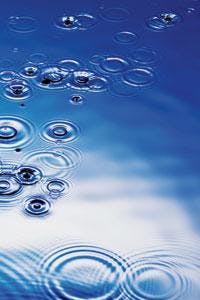Best sourcing approach keeps water production costs down
Ong Hian Hai, Luc De Ryck
Singapore structures its largest water reclamation project through a public-private partnership in order to increase its water supply cost-effectively.
An innovative public-private partnership between the Public Utilities Board (PUB) in Singapore and Keppel Integrated Engineering (KIE) is developing the island nation’s fourth large-scale water reclamation NEWater facility. Reclaimed water is referred to as NEWater. The Ulu Pandan plant, to begin operating in late 2006, marks the second time PUB invited private sector participation in a water supply project by structuring a Design-Build-Own-Operate (DBOO) contract.
In January 2005, the PUB signed the 20-year DBOO contract with Keppel to design, build, own, and operate Singapore’s largest NEWater factory, supplying up to 116,000 cubic meters per day of reclaimed water and 46,000 cubic meters per day of industrial water over a period of 20 years, beginning in December 2006. The factory has since been modified to produce NEWater only at 148,000 cubic meters per day. KIE is the environmental technology and engineering division of Keppel Corporation, with headquarters in Singapore and an operating base in Willebroek, Belgium.
The Republic of Singapore is exploiting its limited water resources in order to meet increasing demands from its growing population and industrial sectors. Large-scale reclamation of used water for reuse has proven sustainable and viable in the past few years given the successful operations of three NEWater factories in Singapore, located in Bedok, Kranji, and Seletar. Together, these facilities provide 120,000 m3/d of reclaimed water.
NEWater is clean water reclaimed from the secondary treated effluent by means of advanced membrane and ultra-violet technologies in a three-stage process. The first treatment process involves the pre-treatment of the secondary treated effluent using micro-filtration membrane. The micro-filtration membrane with a pore size of 0.2 µm filters out suspended solids, bacteria and large viruses.
The second treatment process using reverse osmosis (RO) membrane removes even smaller particles and microorganisms. The RO membrane has a much smaller pore size of .4nm. This is the “heart” of the entire NEWater treatment process and the resultant permeate is free from all bacteria and viruses, and already of a quality of clean water.
The third stage uses ultraviolet (UV) disinfection that provides an added safety barrier. The disinfection system consists of UV lamps delivering a heavy dose of UV light. The end product is NEWater.
Because NEWater is cleaner than even PUB tap water, it has become an attractive alternative water source for industry and commercial buildings that require ultra clean water. These include wafer fabrication in the semiconductor sector, and air-con cooling in commercial and office buildings. In addition to supplying NEWater for industrial use, a small quantity has also been added into Singapore’s raw water reservoirs for indirect potable use (IPU). In the reservoir, NEWater is blended with reservoir water and the mixed water undergoes a process of naturalization before it is further treated at the waterworks to produce drinking water. As at 2005, four million gallons per day (mgd) of NEWater or about one percent of total water consumption is introduced into the reservoir for IPU. The amount will be increased progressively to 10 mgd by 2011.
Two of the existing NEWater factories, Bedok and Kranji, with a combined production capacity of 96,000m3/d, were established through the conventional “build to design” delivery concept. This involved the engagement of consultants to develop the detailed design, followed by engagement of contractors to build the factories in accordance with the design. The contractor designed and built the third NEWater factory at Seletar, which has a production capacity of 24,000 m3/d.
PUB’s experience from the first three NEWater factories helped establish the sustainability and viability of reclamation of used water. The next step was to adopt a “Best Sourcing” approach by inviting private sector participation. For the Ulu Pandan NEWater Factory, PUB facilitated private sector participation by structuring the project based on the DBOO arrangement. Under the PPP arrangement, KIE will design, build, own and operate the Ulu Pandan NEWater factory, and supply NEWater and industrial water (IW) to PUB for a period of 20 years. The concession company, Keppel Seghers NEWater Development Co. Pte Ltd (which is wholly owned by KIE), will own and operate the factory.
The same stringent purification and multiple-barrier treatment process using micro-filtration, RO and UV light disinfection technologies, consistent with the three existing NEWater factories will be employed at the Ulu Pandan facility.
KIE will put in place a comprehensive monitoring and audit system to allow PUB to regularly check on the water quality and operation and maintenance of the factory. This system links the factory's key on-line water quality monitoring system to the PUB monitoring room. With this, continuous real-time information on the major water quality parameters of NEWater and industrial water will be available before it is delivered to consumers. An accredited laboratory will sample and analyze regularly the NEWater and industrial water. In addition, audits will be conducted regularly to ensure that factory operations meet the required quality standards.
In summary, the NEWater Agreement requires Keppel Seghers to treat in-spec feedwater (provided by PUB) to produce NEWater that meets PUB specifications. And PUB must provide feedwater in the form of secondary treated effluent from the Ulu Pandan Water Reclamation Plant to Keppel-Seghers.
The PUB-KIE partnership is a good example of how PPP contracts can improve the delivery of public services in a cost-effective manner by using the expertise and resources of public and private companies. Such partnerships will enhance supply efficiency and help keep the cost of water affordable for the benefit of all water users. Over time, this will also help Singapore’s water industry to grow and mature into a more vibrant, innovative and export-oriented service industry.
Authors’ Note
Ong Hian Hai is the deputy director of the Technology Office within the Public Utilities Board, Singapore. Luc De Ryck is the senior general manager of Keppel Integrated Engineering Ltd, Singapore. For more information, visit www.keppelseghers.com.

